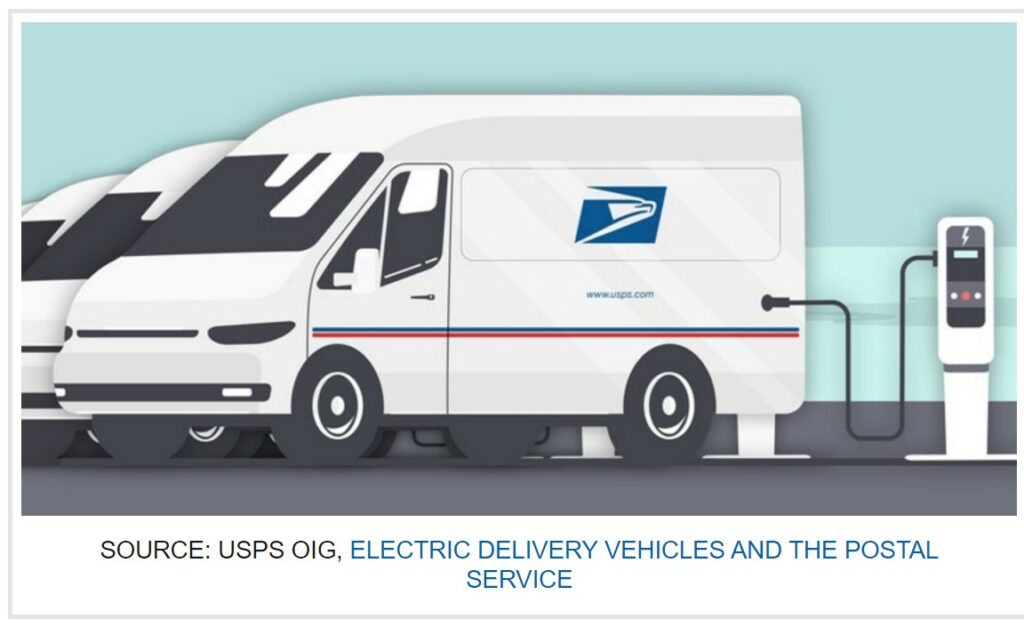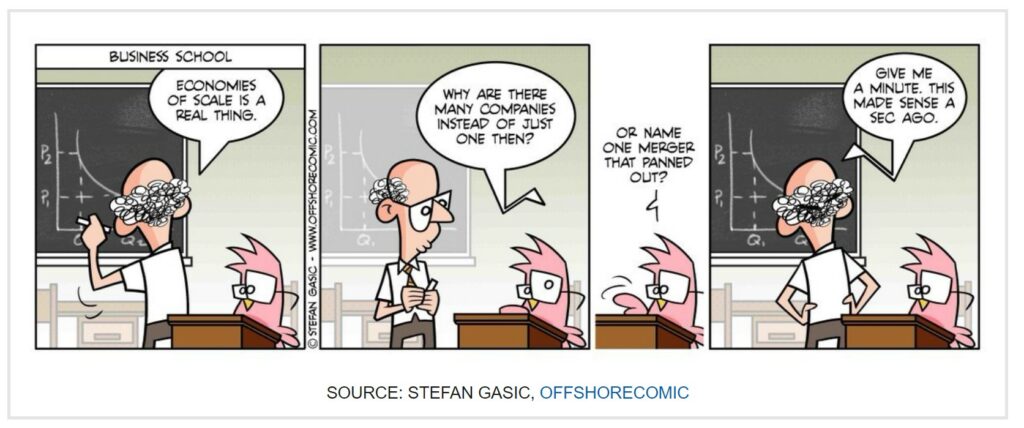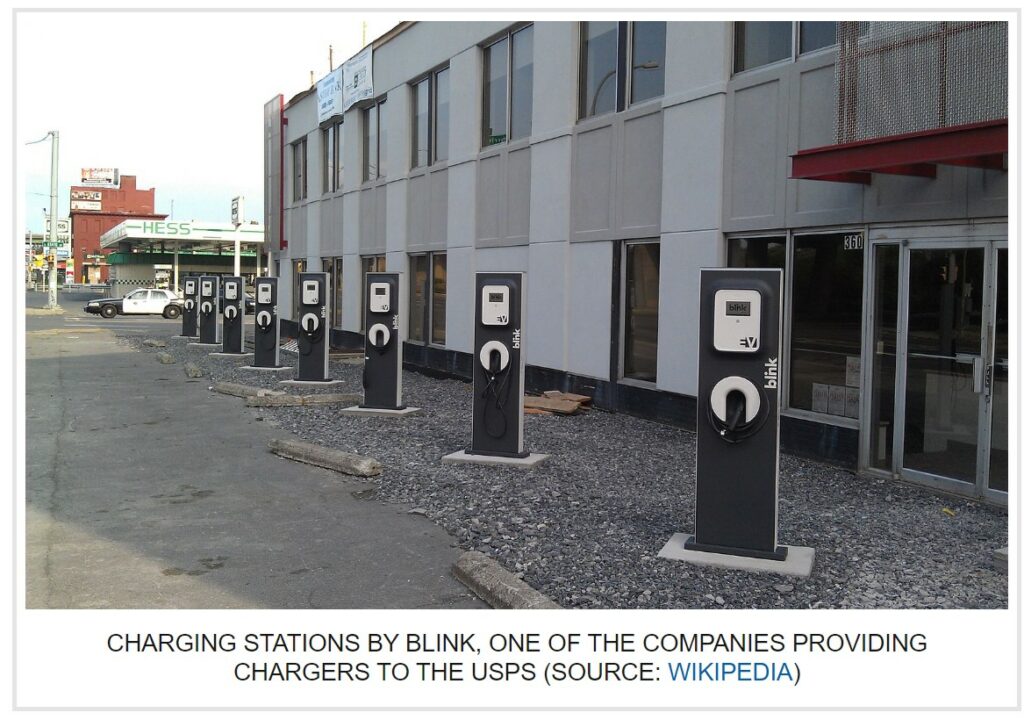EVs and S&DCs: USPS says you can’t have one without the other, Save the Post Office, Steve Hutkins The Postal Service is using the very popular plan to buy electric vehicles (EVs) to justify its very unpopular plan to relocate carriers to Sorting & Delivery Centers (S&DCs). In press releases, news articles, and presentations to business mailers, the two plans are being yoked together, as if you can’t have one without the other. Linking the plans makes it harder to say no to S&DCs. It also allows the Postal Service to use the .7 billion it got from Congress for charging infrastructure to help pay for creating S&DCs. At a meeting last week of the Mailers Technical Advisory Council, the venue where the Postal Service shares information with
Topics:
run75441 considers the following as important: electric vehicles, Hot Topics, politics, Sorting & Delivery Centers, Sorting & Delivery Centers, Steve Hutkins, US EConomics, USPS
This could be interesting, too:
Robert Skidelsky writes Lord Skidelsky to ask His Majesty’s Government what is their policy with regard to the Ukraine war following the new policy of the government of the United States of America.
NewDealdemocrat writes JOLTS revisions from Yesterday’s Report
Joel Eissenberg writes No Invading Allies Act
Ken Melvin writes A Developed Taste
EVs and S&DCs: USPS says you can’t have one without the other, Save the Post Office, Steve Hutkins
The Postal Service is using the very popular plan to buy electric vehicles (EVs) to justify its very unpopular plan to relocate carriers to Sorting & Delivery Centers (S&DCs). In press releases, news articles, and presentations to business mailers, the two plans are being yoked together, as if you can’t have one without the other.
Linking the plans makes it harder to say no to S&DCs. It also allows the Postal Service to use the $1.7 billion it got from Congress for charging infrastructure to help pay for creating S&DCs.
At a meeting last week of the Mailers Technical Advisory Council, the venue where the Postal Service shares information with business mailers, the USPS gave a presentation about its new fleet of electric vehicles. It was another opportunity to join the S&DCs and EVs at the hip.
The presentation goes through the problems of the aging fleet, the benefits and capabilities of a new fleet, and the characteristics of the Ford E-transit and the Next Gen Delivery Vehicle. Then there’s a slide about EVs and S&DCs:

The MTAC presentation says that the S&DC and EV plans are complementary. They can be but the plans were devised independently of each other. The S&DC plan was developed long before the Postal Service decided to buy more and more EVs, and the commitment to buy an electric fleet has little to do with the S&DC plan.
The decision to buy a mostly electric fleet was a response to lawsuits by environmental groups and the attorneys general of 16 states, the EPA’s criticism of the USPS environmental impact study on the next-gen fleet, and the fact that California is soon to impose Clean Fleets Regulations on large fleets. When $3 billion in funding was made available by Congress and the Biden administration in the Inflation Reduction Act, there was no longer a good reason to resist going with EVs.
That’s a complete turnaround from where things stood two years ago. At a Congressional hearing in February 2021, the Postmaster General vehemently defended his plan to purchase a new fleet with 90 percent gas-powered vehicles and only 10 percent electric vehicles.
When it comes to EVs, the Postal Service has now gone through all the stages of grief, from denial to bargaining (which succeeded in getting funding from Congress) to acceptance. In fact, the Postal Service is now going beyond acceptance. It’s embracing the idea of buying a new electric fleet as if that had been the plan all along.
In another presentation at the MTAC meeting, this one focusing on S&DCs, the Postal Service also pushed the tie-in with the EVs. A slide on the “future phases” of the S&DCs says one of the benefits of S&DCs will be to serve as an “electric vehicle hub.“ That’s probably the first time we’ve heard that, but it won’t be the last.
A day after the MTAC meeting, the Postal Service announced it had created an Environmental Council to oversee the implementation of plans to transform the processing and delivery networks and the rollout of the new fleet — another way of binding the plans together. One of the Council’s goals will no doubt be to show how S&DCs are good for the environment — despite the fact that the new delivery network will add an average of 25 miles to 100,000 routes, 6 days a week.
The Council will be chaired by the Postmaster General himself. His views on where the charging stations should go are well known. Last fall, he took the Washington Post on a grand tour of postal facilities in Georgia, including visits to a small rural post office and his big new facility — a future regional processing center and an S&DC — in Palmetto, outside of Atlanta. The PMG explained how he couldn’t fathom putting charging stations at small rural post offices and why they would instead be installed at the new S&DCs. The PMG was already fending off arguments that the charging stations should be put at post offices.
Infrastructure needs and economies of scale
The slide in the MTAC presentation claims that “S&DCs are more likely to support the power and infrastructure needs required by an electric fleet” and there will be “less infrastructure upgrades required to deploy.”
There will of course be fewer infrastructure upgrades if they occur at a several hundred S&DCs instead of a several thousand post offices. That’s obvious. But the Postal Service has provided no data demonstrating that putting the charging infrastructure at S&DCs will better serve the needs of the electric fleet or the American public.
It’s not necessarily true that upgrading one big facility to handle charging stations will be cheaper, more efficient, or simply a better idea than upgrading several post offices. Putting 200 charging stations at a not-very-modern P&DC that’s been repurposed as an S&DC will probably require major changes to the facility’s electrical system. Putting those chargers at the fifteen of twenty post offices sending their carriers to the S&DC might require only minor changes to each facility.
The MTAC presentation also claims that centralizing the chargers at S&DCs will allow for “economies of scale” compared to putting them at “myriad small locations.” But when the Postal Service ordered 14,000 charger stations, it probably enjoyed an economy-of-scale discount regardless of where they’re ultimately installed.
“Economies of scale” essentially means bigger is better. If that were always true, why not just consolidate all the post offices in a city or region into one big mega-post office? It would be a lot cheaper for the Postal Service. Forget about the problems it would cause customers.
Consolidation and centralization may help a company’s bottom line, but they usually end up outsourcing the pain, like the way Walmarts and Amazon can suck the life out of Main Street and its small businesses. In the case of S&DCs, the pain will be borne by the carriers who have to commute further to the S&DC, the postal clerks who get excessed from their jobs, and the customers whose post office gets downgraded to fewer hours of operation or closed completely.
Even simply as a matter of cost effectiveness, it’s not clear that putting chargers in S&DCs, which are predominantly located in urban and suburban areas, is better than putting them at small rural post offices. That’s where they would do the most good. According to an OIG report from last year, Electric Delivery Vehicles and the Post Office, EVs save more money on longer routes, like those in rural areas.
Charging stations at post offices
The Postal Service stated in February 2023 that it “plans to begin building out its charging infrastructure across a minimum of 75 locations within the next 12 months.” That’s also the number of S&DCs the Postal Service says it wants to establish by the end of the year. In other words, all 75 of those locations getting chargers will be S&DCs. The Postal Service has given no indication that the chargers will be installed anywhere other than at S&DCs.
Charging stations at S&DCs will not be available to the public, while they could easily be used by the public at post offices while the carriers are out delivering the mail. That was one of the rationales for giving the Postal Service the funding in the first place. Charging stations at post offices were intended to be part of a national infrastructure of chargers.
In May 2022, the House Oversight Committee — then chaired by Representative Carolyn Maloney, the sponsor of the Postal Reform Act — held a hearing entitled “It’s Electric: Developing The Postal Service Fleet of the Future.” In her opening statement Maloney suggested that public-facing charging stations might be a way for the Postal Service to bring in new revenue.
At the hearing, Rep. Brenda Lawrence (D-Mich.), who served as a postal worker for thirty years, questioned Victoria K. Stephen, USPS Executive Director of the Next Generation Delivery Vehicle program, about the idea of public-facing charging stations. Stephen pointed to obstacles like legal constraints on what services the Postal Service is allowed to provide beyond strictly “postal” services, as well as the need to maintain a secure fence line to enclose vehicles.
Despite the pushback, Lawrence made it clear that in her view funding to the Postal Service for electrifying the fleet should include public-facing chargers. She’s joined in that view by Rep. Marcy Kaptur (D-Ohio), co-chair of the House Auto Caucus:
“We already own the property, the Postal Service has these vehicles and we could make them available to the public as well.” (For more on all this, see the 2021 Bloomberg article, “Post Offices Floated as Public Electric Vehicle Charging Sites.”)
In October 2022, Maloney sent a letter to the Postmaster General requesting information on his plans to use funding made available by the Inflation Reduction Act and the Bipartisan Infrastructure Law to help create a nationwide public EV charging network. His reply, if he sent one, has not been made public.
Members of Congress have even proposed bills to put the chargers at post offices. In 2021, Rep. Stephen Lynch (D-MA) introduced H.R.3521, which would have required the Postal Service, by January 1, 2026, to put at least one electric vehicle charging station for use by the public or USPS officers and employees at each postal facility.
In addition to members of Congress, the APWU has come out in favor of public charging stations. In its statement applauding the White House announcement of new plans for a massive transition to electrification of the next generation delivery fleet, the union said this:
“The APWU and our community allies will continue advocating for charging stations at post offices which will be available for public use. There is no better network suited to be the foundation of a nationwide system/grid of EV charging stations than the public Postal Service anchored in every town and community.”
No undoing it
One unspoken reason the Postal Service wants the charging infrastructure put at S&DCs is it will help make the S&DC system a permanent feature of the delivery network. After spending millions on chargers at an S&DC, there’s little likelihood that the Postal Service would undo the S&DC and return carriers to post offices.
Reversals like that have happened in the past. In 2010-2014, the Postal Service implemented the Delivery Unit Optimization (DUO) program, which relocated about 3,000 routes and their carriers from one small post office to another. Many of the relocations did not realize the anticipated cost savings and instead lost money (as discussed in this OIG report), and the Postal Service returned many of the carriers to their original locations.
If the Postal Service can undo a DUO, it could do the same with S&DCs — but not if that’s where the charging stations have been installed.
Putting chargers at post offices would demonstrate a commitment to maintain the post office at the same location — a commitment the Postal Service doesn’t want to make. Once an investment has been made to install the chargers at a post office, it won’t make much sense to terminate the lease or sell the property. The Postal Service wants the flexibility to close a post office whenever it wants. Charging stations would just get in the way.
— Steve Hutkins
Asking the Wrong Questions: Reflections on Amazon, the Post Office, and the Greater Good, Angry Bear, Mark Jamison @ Save the Post Office.
(Featured Photo: Postmaster General Louis DeJoy, joined by senior Biden administration officials, unveils the plan for electric vehicles. Jacob Bogage, Washington Post)
For more about the transformation of the delivery network, check out our S&DC dashboard. For more about the connection between S&DCs and EVs, see these previous posts.




